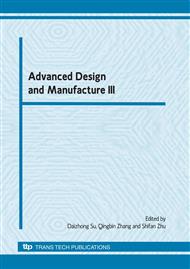p.35
p.39
p.43
p.47
p.51
p.55
p.59
p.63
p.67
Numerical Analysis of Shock Responses for a Marine Gearbox System
Abstract:
Gearbox system, as the main component of the marine power plant, is the closed drive unit that connects the main engine to the shaft. The operation state of the gearbox system has great influence for the safety and reliability of the ship. Shock loading is one of the most common external excitation for the ship and often destroys the devices and structures. Then, according to a mass of numerical calculations, this investigation develops some parameterizations for shock responses of the marine gearbox. The system modeling procedure is based on 3D finite element method which considers the effects of transient dynamic, geometrical nonlinear and impact/contact problems. Typical shock loads, which have the shape of double peak and triangle wave, were applied alone the three perpendicular directions on the bottom surface of the gearbox system to simulate the process of base excitation. The load can be described by two parameters: amplitude and wave length. Responses of the system were calculated with different load parameters and the maximum deformations were taken out by using Von Mises yield criterion. The relationship between shock parameters and structure stress were finally expressed by simulation data curve.
Info:
Periodical:
Pages:
51-54
Citation:
Online since:
November 2010
Authors:
Price:
Сopyright:
© 2011 Trans Tech Publications Ltd. All Rights Reserved
Share:
Citation:


